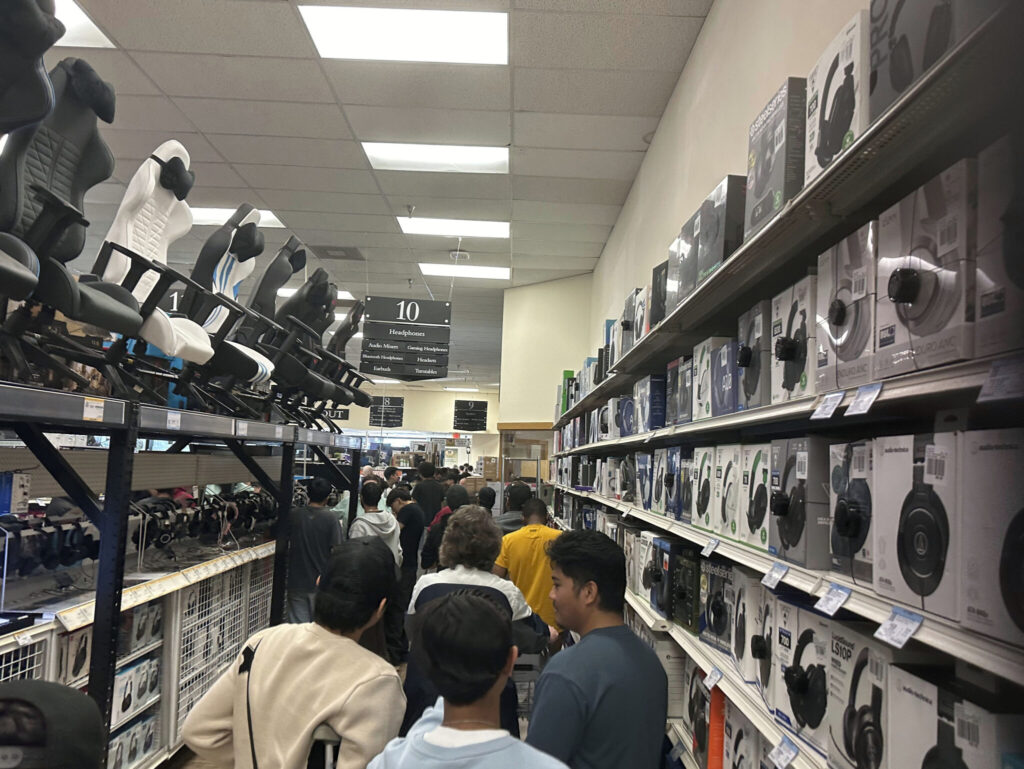U.S. inflation ticked down again last month, with cheaper gas helping further lighten the weight of consumer price increases in the United States. Tuesday’s report from the Labor Department said the consumer price index rose just 0.1% from October to November. Compared with a year earlier, prices were up 3.1% in November, down from a 3.2% year-over-year rise in October.
Quick Read
- Inflation Rate Decreases: U.S. inflation slightly decreased last month, with a notable drop in gas prices contributing to lighter consumer price increases.
- Persistent Price Rises in Certain Areas: Despite the overall decrease, prices in some sectors, like restaurants, used cars, and auto insurance, continue to rise at a fast pace.
- Consumer Price Index (CPI) Data: The consumer price index rose by just 0.1% from October to November. Year-over-year, the CPI was up 3.1% in November, a slight decrease from October’s 3.2%.
- Core Prices: Core prices, which exclude food and energy costs, increased by 0.3% from October to November, a bit higher than the previous month’s 0.2% increase. Year-over-year, core prices were up by 4%.
- Federal Reserve’s Stance: The Federal Reserve is likely to maintain its benchmark interest rate unchanged in its upcoming meeting, given the mixed inflation report.
- Current Key Rate: The Fed’s key rate is approximately 5.4%, the highest in 22 years, aimed at combating inflation. This has increased the cost of mortgages, auto loans, and other forms of credit.
- Gas Prices Impact: A significant decrease in gas prices, from a peak of $5 to $3.15 a gallon, has helped moderate inflation.
- Grocery Store Inflation: In contrast to gas prices, grocery store inflation remains high and continues to strain household finances.
- Federal Reserve Officials’ Views: Fed officials, including Chair Jerome Powell, recognize the decrease in inflation since June 2022 but remain cautious due to the still high rate of price increases.
- Future Rate Decisions: While the Fed might be done raising rates, it plans to maintain its benchmark rate at its current peak for several more months, with the possibility of future increases if necessary.
- Alternative Inflation Gauge: According to a lesser-known inflation gauge preferred by the Fed, core prices rose 3.5% in October year-over-year, slightly below the central bank’s forecast.
- Speculation on Rate Cuts: There is speculation about potential interest rate cuts next year, with some economists suggesting as early as March, although Powell has indicated it’s too early to consider such cuts.
The Associated Press has the story:
US consumer inflation eased slightly in November as gas prices fell
Newslooks- WASHINGTON (AP)
U.S. inflation ticked down again last month, with cheaper gas helping further lighten the weight of consumer price increases in the United States.
At the same time, the latest data on consumer inflation showed that prices in some areas — services such as restaurants, used cars and auto insurance — continued to rise uncomfortably fast.
Tuesday’s report from the Labor Department said the consumer price index rose just 0.1% from October to November. Compared with a year earlier, prices were up 3.1% in November, down from a 3.2% year-over-year rise in October.
Core prices, which exclude volatile food and energy costs, rose 0.3% from October to November, slightly faster than the 0.2% increase the previous month. Measured from a year ago, core prices rose 4%, the same as in October. The Federal Reserve considers core prices to be a better guide to the future path of inflation.

The mixed picture in Tuesday’s inflation report will likely keep the Fed on track to leave its benchmark interest rate unchanged when its latest meeting ends Wednesday. Inflation still exceeds the Fed’s 2% annual target, which is why its officials are set to leave rates high. But with inflation cooling faster than expected, the Fed’s policymakers likely see no cause to further raise rates, at least for now.
The Fed’s widely expected decision to keep its key rate unchanged for a third straight time suggests that it’s probably done raising borrowing costs. The central bank has raised its key rate to about 5.4%, the highest level in 22 years, in a determined drive to conquer inflation. Its rate hikes have made mortgages, auto loans, business borrowing and other forms of credit much costlier, reflecting the Fed’s goal of slowing borrowing and spending enough to tame inflation.
Helping keep a lid on inflation has been a steady decline in gas prices. From a peak of $5 about a year and a half ago, the national average has dropped to $3.15 a gallon as of Monday, according to AAA. Grocery store inflation, by contrast, has proved especially persistent and a drain on many households’ finances.

Chair Jerome Powell and other Fed officials have welcomed inflation’s steady fall from 9.1% in June 2022. But they have cautioned that the pace of price increases is still too high for the Fed to let down its guard.
As a result, even if the central bank is done raising rates, it’s expected to keep its benchmark rate at a peak for at least several more months. Powell has even warned that the Fed might decide to raise rates again if it deems it necessary to defeat high inflation. The Fed raised its key short-term rate 11 times starting in March 2022.
According to a lesser-known inflation gauge that the Fed prefers, core prices rose 3.5% in October compared with 12 months earlier. That was less than the central bank’s forecast of 3.7% for the final three months of this year.

Inflation’s steady decline has sparked speculation about interest rate cuts next year, with some economists floating the potential for cuts as early as March. The Fed’s preferred inflation gauge has increased at an annual pace of just 2.5% in the past six months.
But Powell has so far brushed aside the idea that the Fed might cut rates anytime soon. He is expected to say so again Wednesday.
“It would be premature,” Powell said earlier this month, “to speculate” on the possibility of Fed rate cuts.







